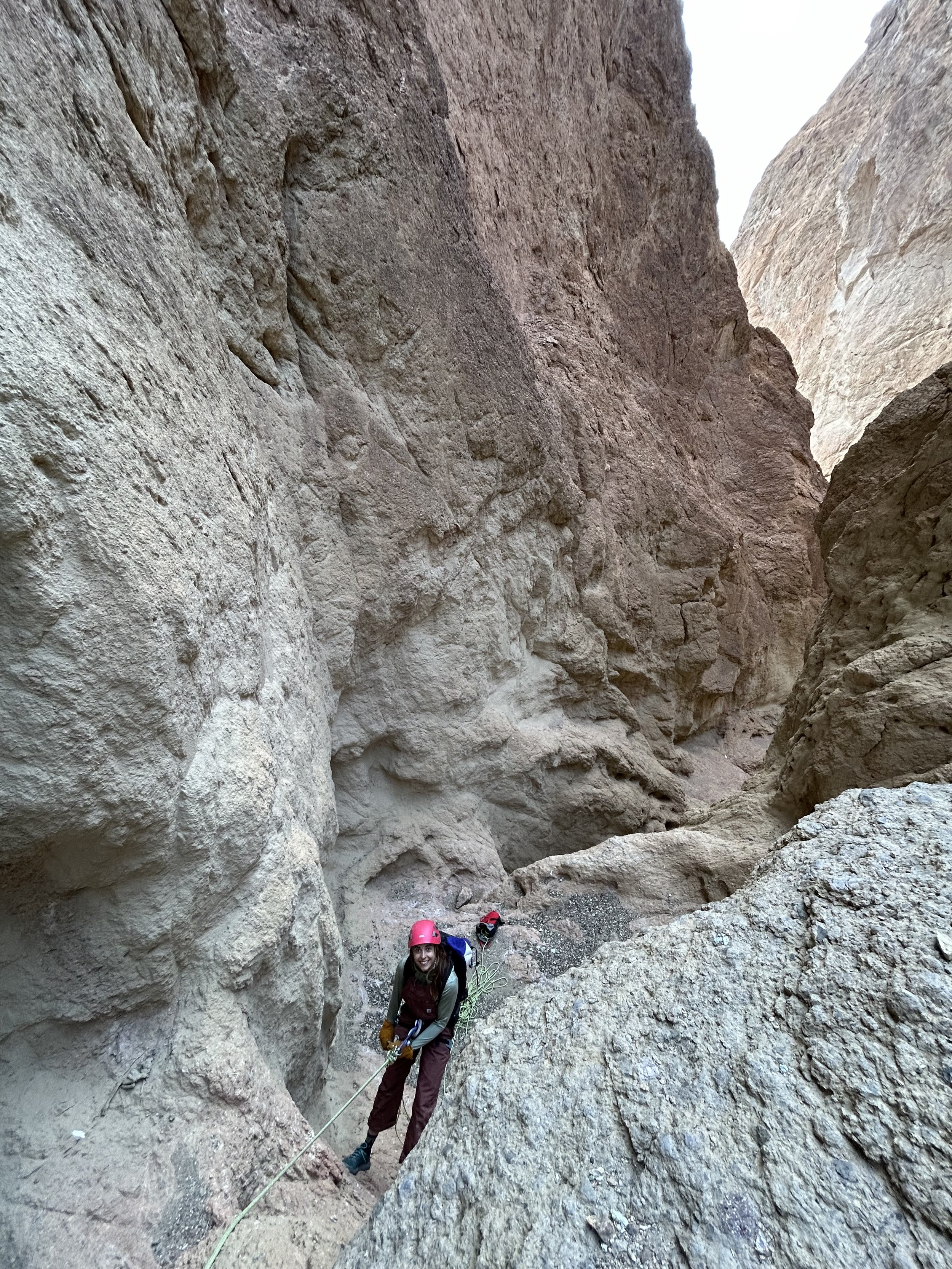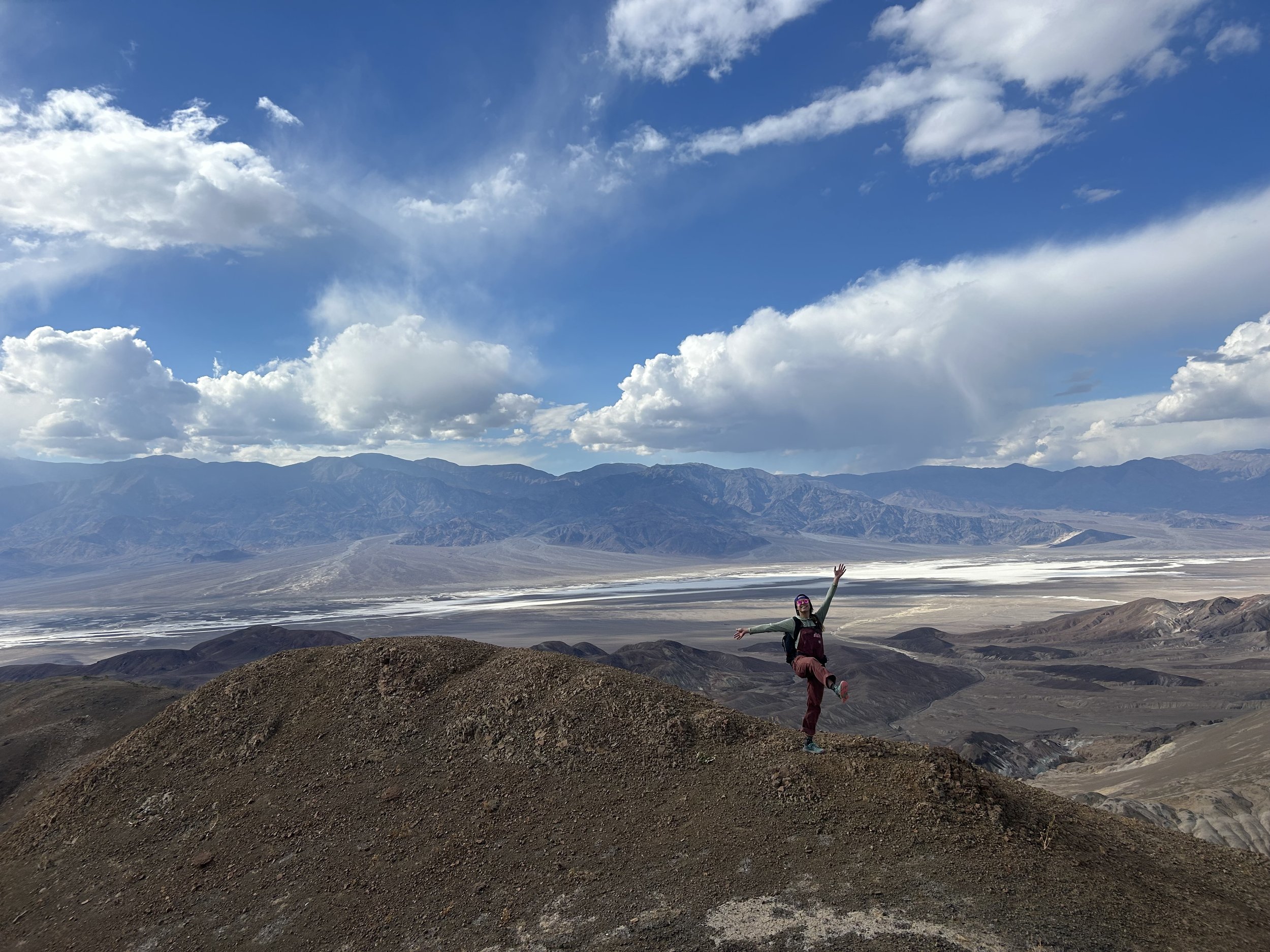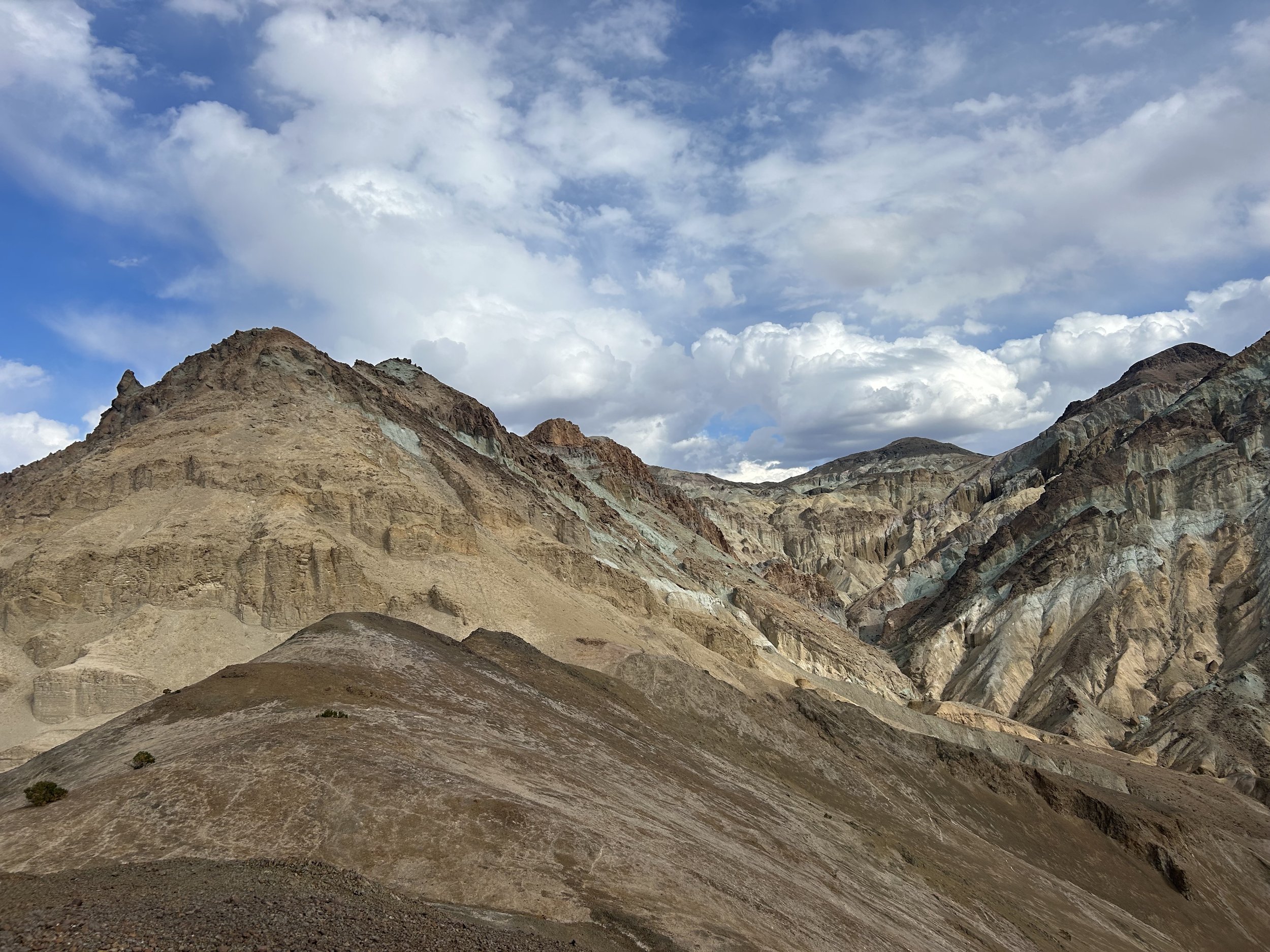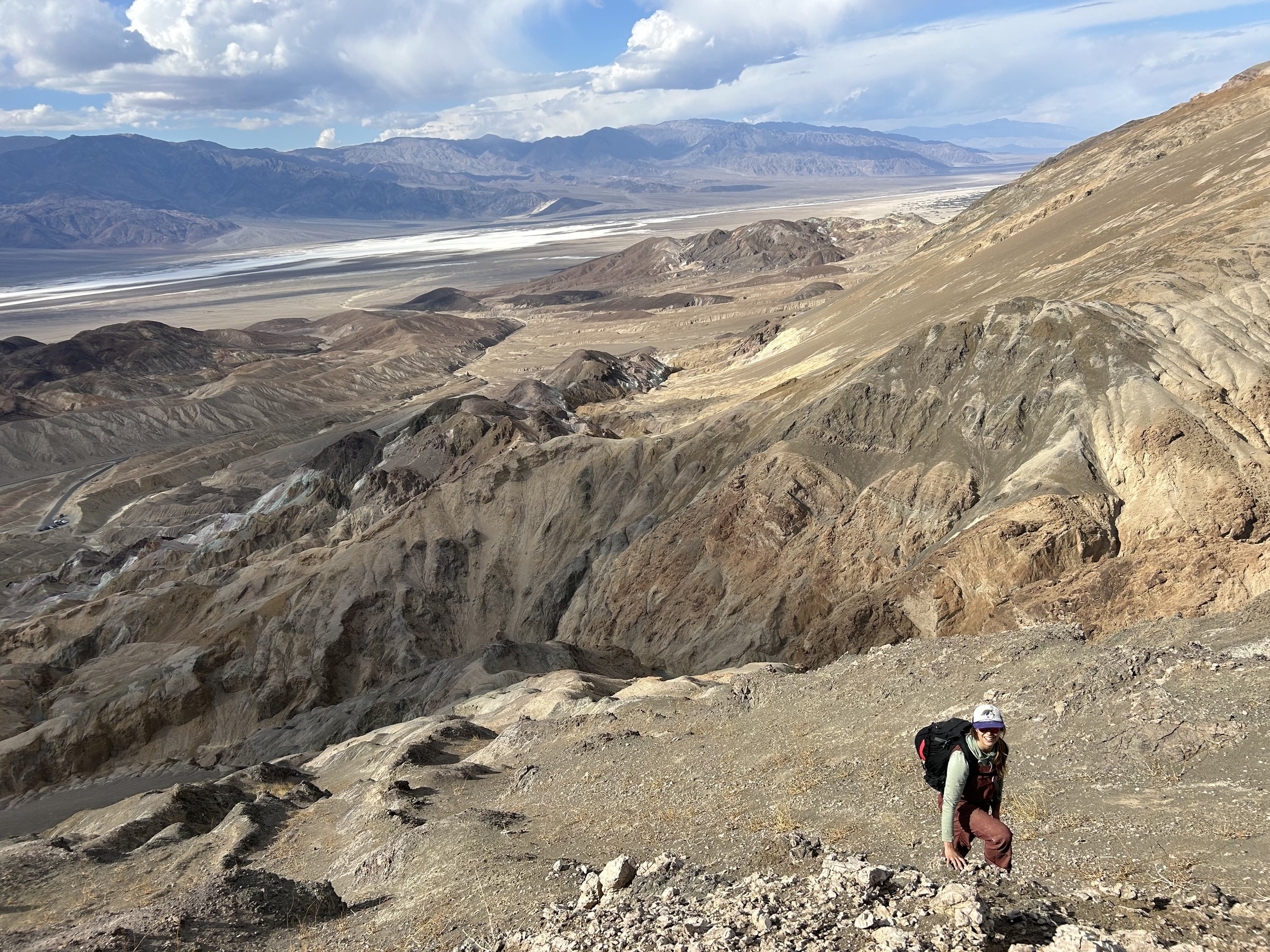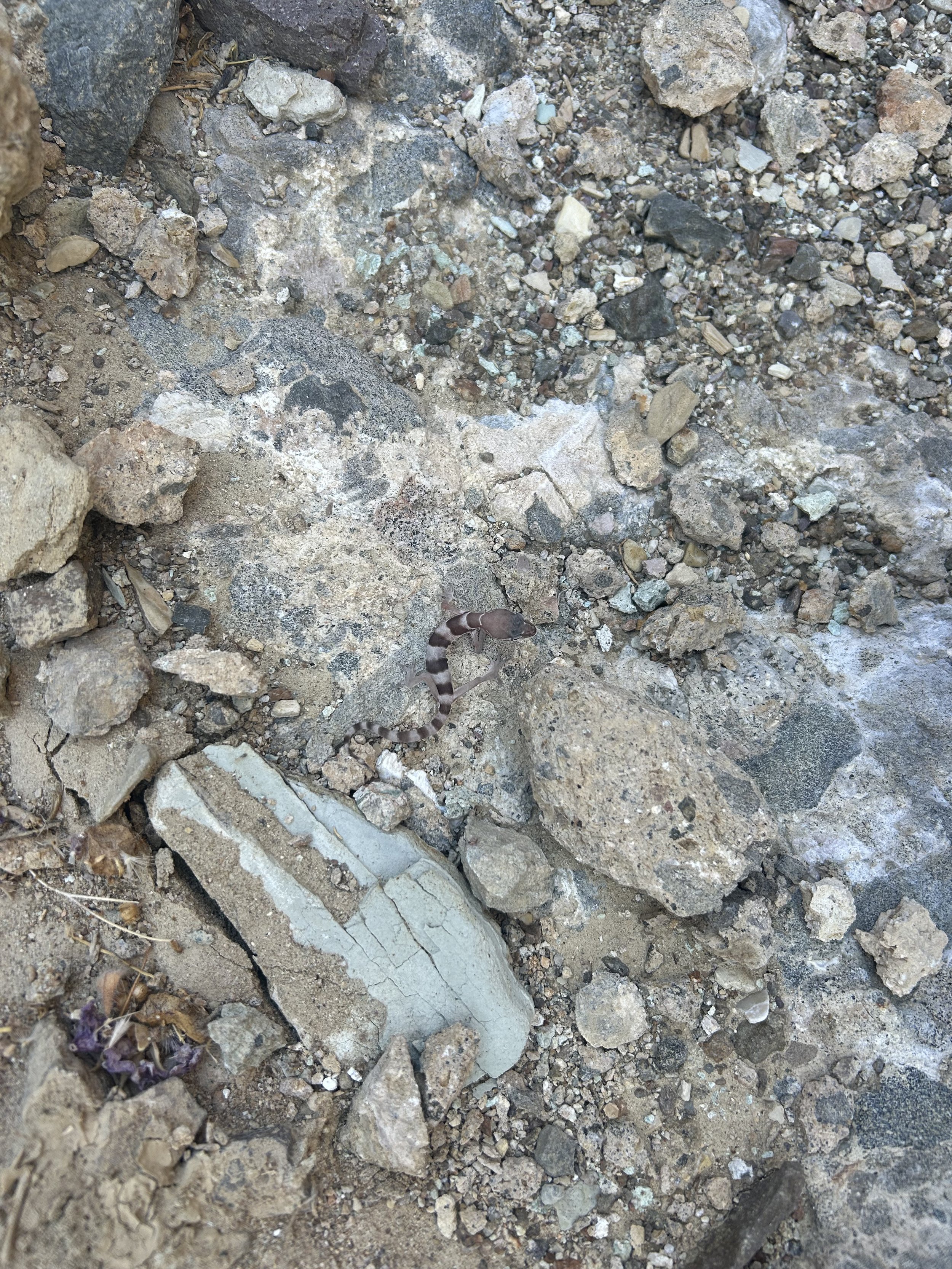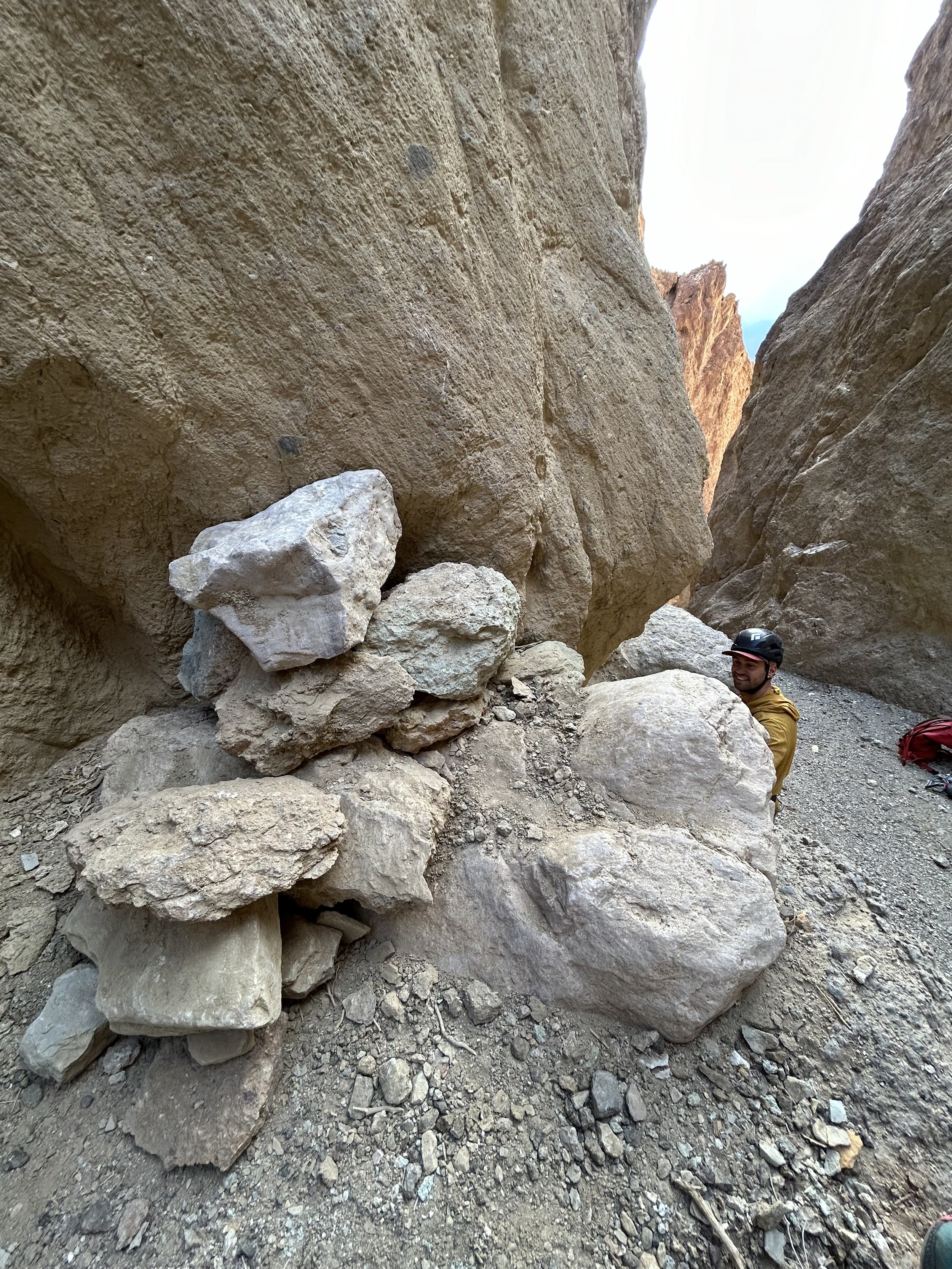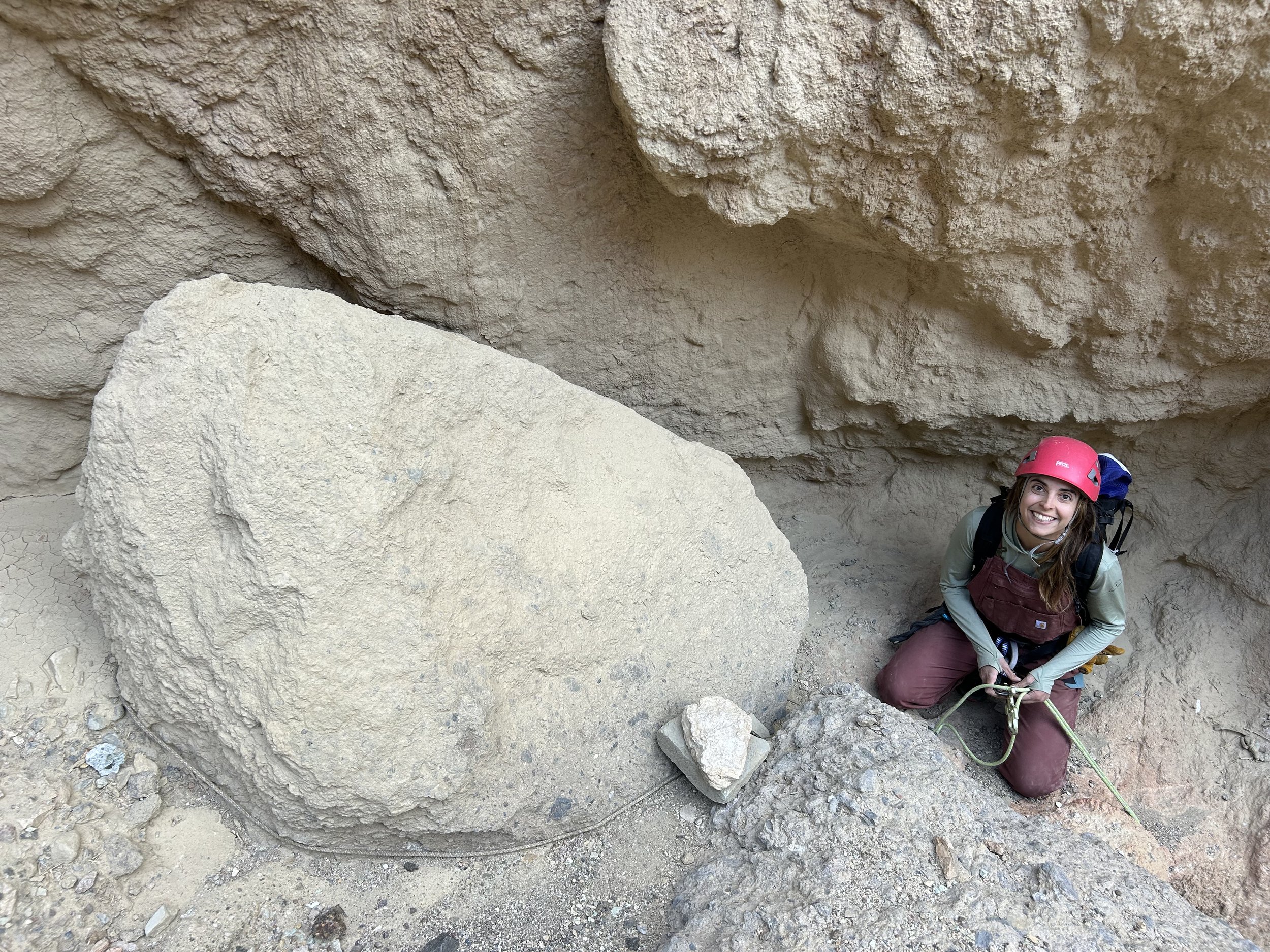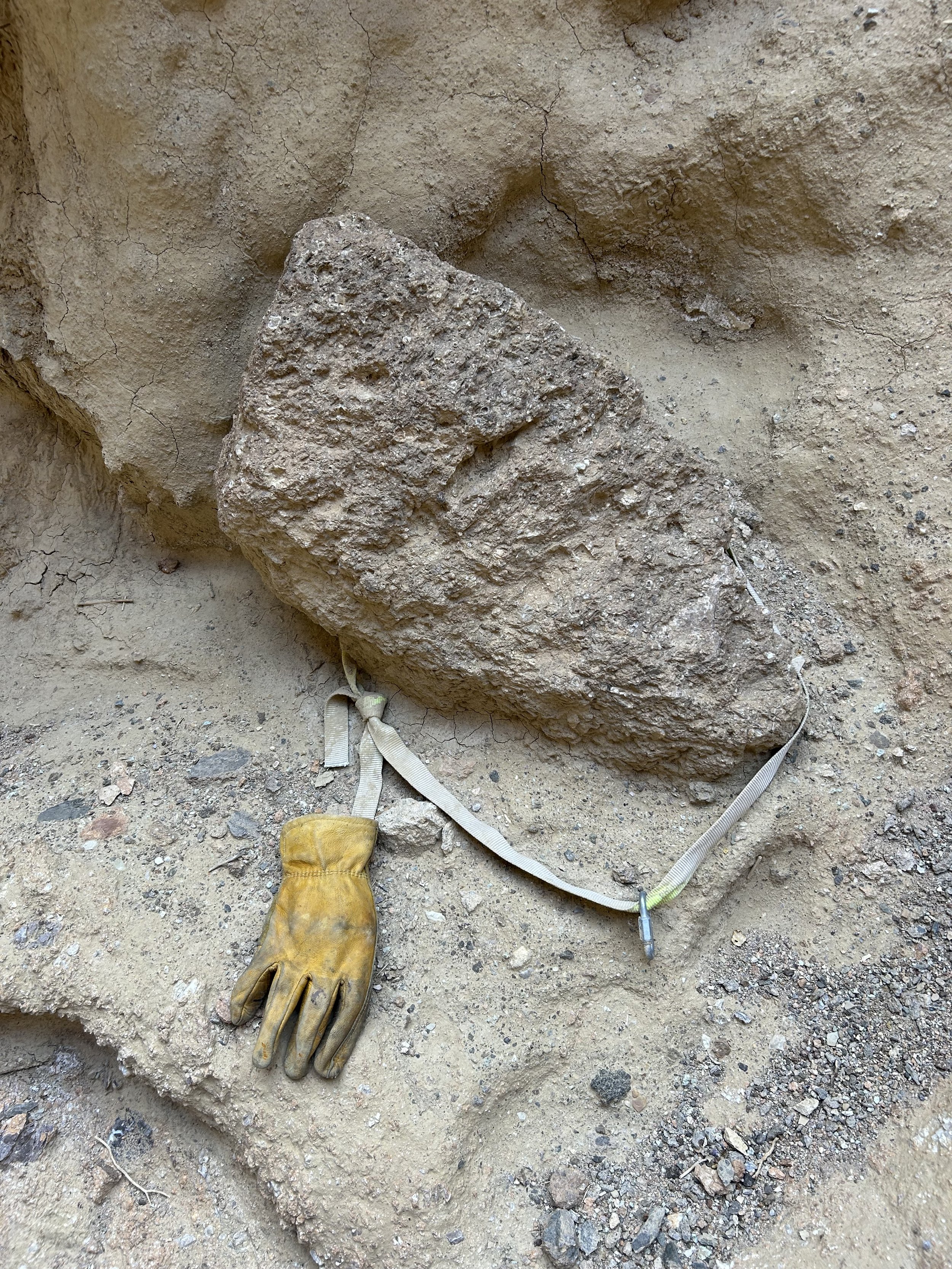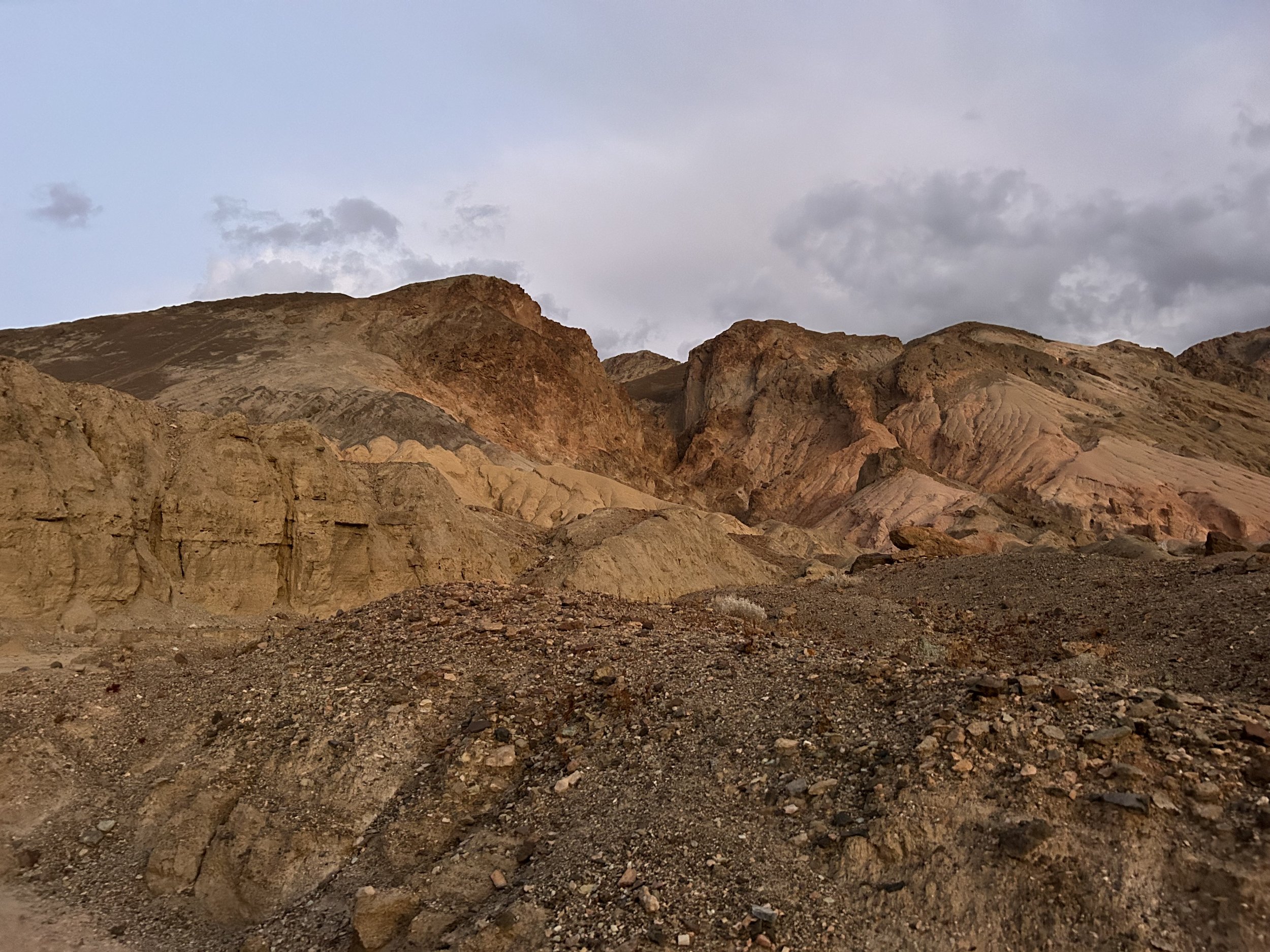Canyoneering; Deadman’s Canyon
Waking Up the Season in Deadman’s Canyon
15 November 2024 | Black Mountains, Death Valley National Park, California
After a long summer in the Sierra, Lauren and I were more than ready to kick off canyoneering season. With a free November weekend on the calendar, it was an easy call: back to the desert. On Thursday afternoon, we left the Owens Valley, winding our way through the stunning desert topography of North Pass, across the Joshua Tree-studded flats of Eureka Valley, and over the Last Chance Range—familiar ground from my previous season’s traverse. From there, we dropped into Death Valley Wash and cruised down the freshly graded North Death Valley Road, eventually descending toward Badwater Basin as golden hour painted the hills.
By nightfall, we reached our quiet camp on the eastern edge of the Black Mountains, tucked away under a moody November sky. The creosote was still fragrant from a light rain the night before—classic desert magic—and we sipped hot drinks under heavy clouds, stoked to be back in one of our favorite winter stomping grounds.
A Slow Start, Then a Canyon with Bite
The next morning started slow, as we let the desert set the pace. After a leisurely breakfast, we made our way to Artist’s Palette Drive, stopping to check out a handful of intriguing side canyons along the way. Eventually, we reached the parking area and set out around 10:30 a.m., packs loaded and spirits high.
Deadman’s Canyon is a sneaky one—subtle from the road but filled with variety. It offered exactly what we were looking for: a mellow approach by Death Valley standards, five solid rappels, great downclimbing, and almost no signs of prior use. A true season warm-up, with just enough spice to shake off the cobwebs.
The Approach: Classic Death Valley
No surprise here—the approach was the crux of the day. We gained about 1,200 feet over 2 hours, navigating loose terrain and making occasional course adjustments. For future reference: staying farther north in the canyon can yield more solid footing and a less miserable time. Aim for the 1,800' shoulder, and prepare for some classic desert slogging.
Rappels, Anchors, and a True “Deadman”
The technical section was incredibly rewarding. We encountered five rappels, all requiring some level of anchor maintenance or complete rebuilds. Here's a breakdown:
R1 (~30’) – Rebuilt a cairn anchor and backed it up. A straightforward start.
R2 (~40’, two-tier) – Dismantled a sketchy setup and used a 25' cordelette to wrap a massive boulder—solid and clean.
R3 (~20’) – Previous “anchor” was barely a wrapped horn—yikes. Built a horseshoe cairn but recommend bringing down more boulders or materials to bury in the future.
R4 (~35’) – Cemented-in cairn, likely pre-Hurricane Hillary. Felt sturdy but we still added backup rocks for redundancy.
R5 (~60’) – The namesake rappel! We excavated an old deadman anchor buried under hardened flood debris. Found the original webbing, backed it up with fresh material, and made the drop. It felt solid, but with more time, a full excavation and rebuild would be ideal. Beautiful rappel—just watch for loose rock.
Between all the anchor work, downclimbing, and route-finding, we wrapped up the day around 5:30 p.m., after a solid 7-hour loop. The descent back to the truck was clean and uneventful—no headlamps needed.
Season Opener Success
Deadman’s Canyon delivered everything we love about early season Death Valley canyoneering: remote beauty, technical variety, just enough adventure, and the satisfaction of setting things right for the next team. Most of our time was spent on anchor evaluation and reconstruction, which means this route will go much quicker for the next group. But for us, this was exactly the kind of slow, thoughtful canyon we wanted to kick off the season.
Lauren and I are already scheming for the next one. Winter’s here, and the canyons are calling.
Thanks for reading! If you are interested in exploring Death Valley, please reach out!
See you in the desert,
Larry
